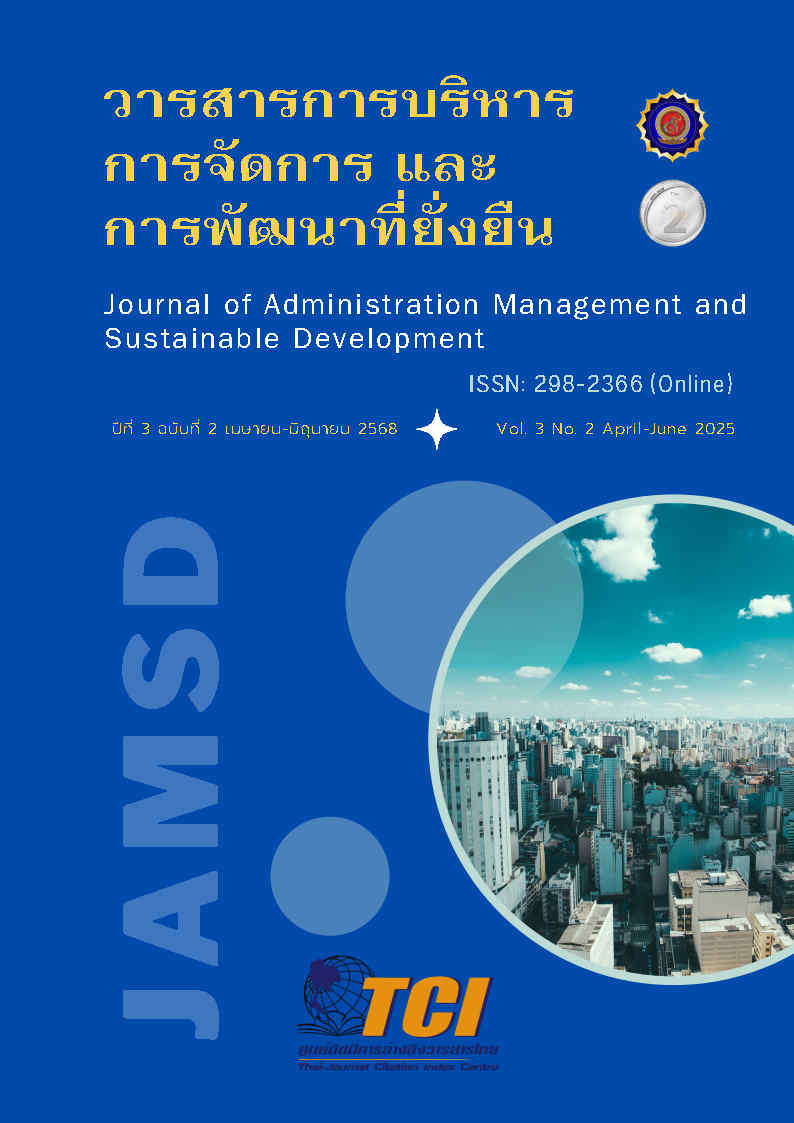Enhancing accounting students’ learnings on auditing internal controls through action-oriented learning task
Keywords:
self-efficacy, action-oriented learning, internal auditingAbstract
This study aimed to 1) investigate changes in self-efficacy among accounting students in performing internal audit tasks before and after participating in an action-oriented learning activity. Additionally, 2) it explored students’ perceptions of the learning experience. The learning activity was implemented through the KU Smart Young Entrepreneurs project, which integrated students’ roles as internal auditors within a simulated real-world business context. The activity was structured around three key phases of the internal audit process: audit planning, audit execution, and audit reporting. The participants were accounting students enrolled in a corporate governance and internal audit course who took part in the experiential learning activity. Data were collected using pre- and post-activity self-efficacy questionnaires and analyzed using paired t-tests. The results indicated a statistically significant increase in students’ self-efficacy across all three phases (p < 0.01), with the highest improvement observed in audit reporting (Cohen’s d = 0.8178), indicating a large effect size. Furthermore, students reported a high level of satisfaction with the activity and recognized its contribution to their preparedness for professional practice in the accounting field. These findings highlight the effectiveness of experiential learning in enhancing self-efficacy and support its integration into internal audit education to better equip students for the complexities of the profession.
References
Anderson, U. L., Head, M. J., Mar, S., Ramamoorti, S., Riddle, C., Salamasick, M., & Sobel, P. J. (2022). Internal auditing: Assurance & advisory services (5th ed.). Institute of Internal Auditors.
Bandura, A. (1977). Self-efficacy: Toward a unifying theory of behavioral change. Psychological Review, 84(2), 191–215. https://doi.org/10.1037/0033-295X.84.2.191.
Beatson, N. J., Berg, D. A. G., & Smith, J. K. (2020). The influence of self‐efficacy beliefs and prior learning on performance. Accounting & Finance, 60(2), 1271–1294. https://doi.org/10.1111/acfi.12440.
Bureau of Academic Affairs and Educational Standards. (2020). Supervisory guidelines for enhancing and promoting active learning in alignment with the policy on "reducing classroom hours, increasing learning opportunities". Office of the Basic Education Commission. http://academic.obec.go.th/web/document/view/143.
Cohen, J. (1988). Statistical power analysis for the behavioral sciences (2nd ed.). Lawrence Erlbaum Associates.
Fowler, L. (2006). Active learning: An empirical study of the use of simulation games in the introductory financial accounting class. Academy of Educational Leadership Journal, 10(3), 93–103.
Hair, J. F., Black, W. C., Babin, B. J., & Anderson, R. E. (2019). Multivariate data analysis (8th ed.). Cengage Learning EMEA.
Holmes, A. F., & Rasmussen, S. J. (2018). Using Pinterest to stimulate student engagement, interest, and learning in managerial accounting courses. Journal of Accounting Education, 43, 43–56. https://doi.org/10.1016/j.jaccedu.2018.03.001
Hurtt, R. K. (2010). Development of a scale to measure professional skepticism. Auditing: A Journal of Practice & Theory, 29(1), 149–171. https://doi.org/10.2308/aud.2010.29.1.149.
Kern, B. B. (2002). Enhancing accounting students' problem-solving skills: The use of a hands-on conceptual model in an active learning environment. Accounting Education, 11(3), 235–256. https://doi.org/10.1080/09639280210141680.
Kolb, D. A. (1984). Experiential learning: Experience as the source of learning and development. Prentice-Hall.
Nelson, M. W. (2009). A model and literature review of professional skepticism in auditing. Auditing: A Journal of Practice & Theory, 28(2), 1–34. https://doi.org/10.2308/aud.2009.28.2.1.
OECD. (2023). G20/OECD principles of corporate governance 2023. OECD Publishing. https://doi.org/10.1787/ed750b30-en.
Sangthong, M. (2020). The effect of the Likert point scale and sample size on the efficiency of parametric and nonparametric tests. Thailand Statistician, 18(1), 55–64.
Sari, M. M. R., & Suryanawa, I. K. (2022). The influence of academic self-efficacy and self-esteem on academic achievement: A study on accounting students. E-Jurnal Akuntansi, 32(3), 617–628. https://doi.org/10.24843/EJA.2022.v32.i03.p05.
Schmidt, D., & Karsten, R. (2006). Self-efficacy and tax research performance. In S. Luttman (Ed.), Advances in taxation (Vol. 17, pp. 121–140). Emerald Group Publishing Limited. https://doi.org/10.1016/S1058-7497(06)17005-2.
Srisawangwong, P. (2018). The development of learning achievement on accounting courses for food businesses using accounting principles applied in the food business of 2-year students majoring in food businesses and nutrition, Rajabhat Mahasarakham University by using simulation learning approach. Journal of Liberal Arts and Management Science Kasetsart University, 5(1), 10–22.
SurveyMonkey. (n.d.). What is a Likert scale? Definition, examples, and tips. Retrieved 17 March 2025, from https://www.surveymonkey.com/mp/likert-scale/.
Thapa, H. S. (2024). Development of employability skills through work-based learning. Journal of Technical and Vocational Education and Training, 18(1), 102-111. https://doi.org/10.3126/tvet.v18i1.62750.
The Institute of Internal Auditors. (2020). Internal audit competency framework. Retrieved 6 May 2025, from https://www.theiia.org/globalassets/documents/standards/ia-competency-framework/internal-audit-competency-framework-thai.pdf.
The Institute of Internal Auditors. (2024a). 2024 North American pulse of internal audit: Benchmarks for internal audit leaders. Retrieved 6 May 2025, from https://www.theiia.org/globalassets/site/resources/research-and-reports/pulse-of-internal-audit/2024-iia-pulse-report.pdf.
The Institute of Internal Auditors. (2024b). Global internal audit standards. Retrieved 6 May 2025, from https://www.theiia.org/globalassets/site/standards/globalinternalauditstandards_2024january9.pdf
The Institute of Internal Auditors. (2024c). The IIA’s three lines model: An update of the three lines of defense. Retrieved 6 May 2025, from https://www.theiia.org/globalassets/documents/resources/the-iias-three-lines-model-an-update-of-the-three-lines-of-defense-july-2020/three-lines-model-updated-english.pdf.
The Securities and Exchange Commission, Thailand. (2017). Corporate governance code for listed companies 2017. Retrieved 6 May 2025, from https://www.sec.or.th/TH/Documents/CompanyHandbooksandGuidelines/CGcode2560_th.pdf.
TLF Research. (2021). Advantages of the 10-point numerical scale. TLF Research. https://www.tlfresearch.com/news-opinion/advantages-of-the-10-point-numerical-scale/.






